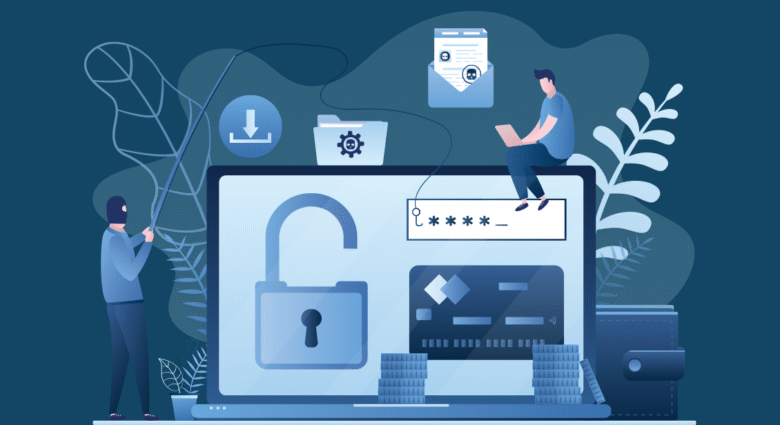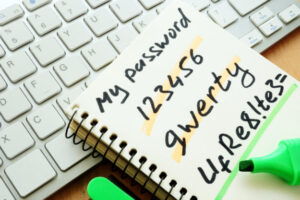Millions of people worldwide are seriously affected by online identity theft. This happens when someone uses your personal information (name, social security number, bank account number, passwords, etc.) without your permission. In addition to the mental anguish, this can lead to financial loss and a drop in your credit score. Identity thieves use phishing emails, fake websites, spyware, and data breaches to obtain your information. The first step to preventing yourself from becoming a victim is to understand what online identity theft is and how it happens.
Be Careful with your Personal Information
Being careful about sharing your personal information is one of the most important strategies for preventing online identity theft. Do not give out your private information, such as your full name, address, phone number, or financial information, unless you are certain that the site or person is trustworthy. On social media, oversharing can make it easier for criminals to catch you, so be careful. Think twice before sharing your date of birth, your pet’s name, or other information that could be used to answer a security question.
Use Strong, Unique Passwords
Your online accounts are the key to your passwords; using weak or repeated passwords increases your risk. Strong passwords should contain uppercase and lowercase letters, numbers, and special characters; be long; and avoid obvious alternatives like “password123.” You should also use a different password for each account. If one website is hacked, criminals can use the same password elsewhere to gain access to multiple accounts. Consider using a reliable password manager to securely create and store complex passwords.
Use Two-factor Authentication (2FA)
Two-factor authentication adds an extra layer of security to your password. With two-factor authentication, after you enter your password, you must enter a second form of verification—a code generated by an authenticator app or sent to your phone. This makes it harder for identity thieves to access your accounts, even if they get your password. Many reputable companies, such as banks and email providers, offer two-factor authentication as an option, so enabling this feature is a simple but effective way to improve your online security.
Beware of Phishing Scams
Identity thieves often use phishing scams to trick you into giving up private information. These scams often send emails, text messages, or phone calls pretending to be from reputable companies or government agencies. They may ask you to download a file or click on a link that could install malware, or they may direct you to a fake website designed to steal your login credentials. Never click on suspicious links or attachments; be wary of malicious emails asking for important information.
Protect your Network and Devices
Maintaining your online identity also means protecting the tools and networks you use to access the internet. Keep your computers, tablets, and smartphones up to date with the latest antivirus programs and security patches. Avoid connecting to unsecured public Wi-Fi networks and use a firewall for sensitive data. If you must use public Wi-Fi, consider encrypting your connection and using a virtual private network (VPN) to protect your data from hackers. Regularly checking the security of your device and network can help prevent unauthorized access.
Sharing Information Online
Always make sure the website you are shopping or banking on uses a secure connection, with “https://” and a padlock icon in the address bar. Don’t use public computers or shared devices when using private accounts. Never save passwords in public or shared browsers; log out completely after using online services. Also, don’t download apps or files from untested websites, as they may contain malware designed to steal your data. Follow these guidelines to protect your data from being stolen or intercepted.
Using Privacy Settings on Social Media
Social media sites collect a lot of personal information that criminals can use to impersonate you or answer security questions. Change your privacy settings to limit who can see your friends list, profile information, and messages. Be careful not to accept messages or friend requests from strangers. Check your social media profiles regularly and remove sensitive or outdated information that could be used. Reducing the risk of identity theft depends on how you protect your online profiles.
Destroy Personal Information Properly
Physical data with sensitive information, such as credit card offers, medical records, or bank statements, can also be targets for identity theft if carelessly discarded. Shred all documents with personal information before throwing them away. Securely delete digital data and wipe the device before selling or disposing of it. Proper disposal reduces the chance of your personal information falling into the wrong hands.
Conclusion
Preventing online identity theft requires not only awareness and vigilance but also following basic security measures. Protecting your personal information, choosing strong passwords and two-factor authentication, and avoiding scams and unsecured networks can significantly reduce your risk. Regularly checking your credit reports and financial accounts allows you to detect unusual activity early and take action quickly. Perfecting your identity theft defenses includes monitoring your digital footprint, securing your devices, and properly deleting data. While no strategy is perfect, combining these measures can protect your identity and give you peace of mind in an increasingly connected world.
FAQs
1. How do I recognize fake scams?
Spam emails usually ask for personal information or lure you to click on a suspicious website, which is phishing. Check the sender; don’t click on unknown links.
2. Is it safe to use public Wi-Fi?
Public Wi-Fi is dangerous in most situations and does not protect private activities. It is safer to avoid shopping or banking on such networks or use a VPN.
3. How often should I check my credit report?
It is advisable to check your credit report at least once a year to detect unauthorized accounts or applications early.
4. Can social media lead to identity theft?
Sharing too much personal information on social media can give criminals access to the data they need to access your accounts or steal your identity.
5. What should I do if I think my identity has been stolen?
Notify your bank, credit bureau, and the relevant authorities immediately, and then take steps to protect your personal information and accounts.




